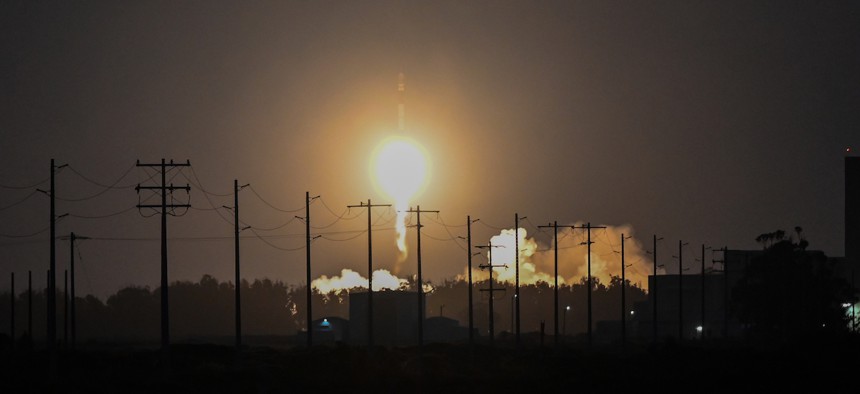
Team Vandenberg successfully launched a space vehicle for the United States Space Force into low Earth orbit aboard Firefly's Alpha vehicle from Vandenberg's Space Launch Complex-2, Sept. 14, 2023, at 7:28 p.m. PDT. U.S. Space Force / Airman 1st Class Kadielle Shaw
Space Force’s speedy launch record clears way for bigger launches—faster
The “Victus Nox” mission is part of the service’s “tactically responsive space” effort to respond quickly to in-orbit threats.
Now that the U.S. Space Force has launched a satellite just 27 hours after receiving orders, industry says it can start sending even bigger payloads to space faster.
The “Victus Nox” mission, the Space Force’s effort to launch a satellite within 24 hours, lifted off Sept. 14. Firefly Aerospace’s Alpha launch vehicle took a small satellite built by Boeing-subsidiary Millennium Space Systems to low Earth orbit to provide space domain awareness data.
This opened the door to faster launch time frames in the future, Bill Weber, CEO of Firefly, told reporters Tuesday.
“Nothing about what we did a week and a half ago was constrained by the size of the technology, either payload or launch vehicle. There’s no reason why what we just did couldn't happen on a much larger launch platform with a much larger payload,” Weber said.
The Space Force aimed to start operating the satellite within 48 hours of the launch—and officials said they successfully pulled that off, in 37 hours.
Victus Nox is part of the Space Force’s effort to achieve “tactically responsive space”—formerly known as Operationally Responsive Space—which will give the Pentagon the ability to quickly respond to threats in space or augment a degraded or destroyed U.S. space system, said Lt. Col. MacKenzie Birchenough, materiel leader for Space Systems Command’s Space Safari, a program office that opened in 2021 to respond to urgent “on-orbit” needs in space.
“What we've demonstrated here with this Victus Nox mission and what we're trying to demonstrate through tactically responsive space is being able to respond to those threats, whether it's having to just characterize something, or if the need be to augment our capabilities, and we're really just trying to get after that extremely short timeline for those different types of missions,” Birchenough said.
Birchenough said the successful Victus Nox launch will keep the Space Force on track to have this tactically responsive space capability by 2026.




